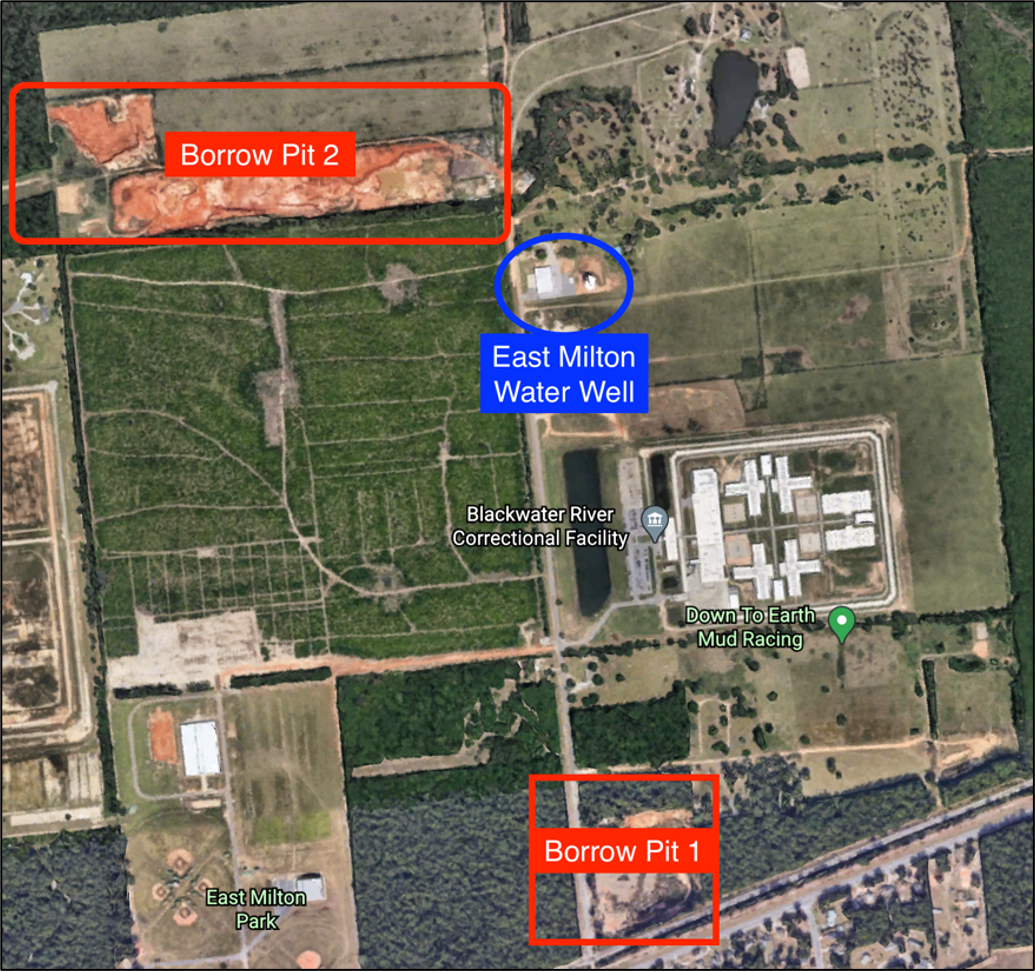South Santa Rosa News – January 11, 2021
Over the past several months, Santa Rosa’s politics have been inflamed by heated debates concerning
the county’s water supply. The arguments largely concern local developers and their practice of digging
sand. The practice leaves large holes or “borrow pits” that many experts say are hazardous to our
underlying water sources.
Developers claim that the practice isn’t as dangerous as many residents believe. They argue that
extraction is necessary for construction in Santa Rosa. Moreover, they point to existing borrow pits that
are already active in Santa Rosa County – some within a few thousand feet of water wells.
So how dangerous are borrow pits really?
Fortunately, environmental scientists have established ways to answer this question. The key concept is
a term known as “wellhead capture zones.” These zones are areas immediately surrounding water wells.
They are the places where the wells draw water over several years. Research recently obtained from
Florida’s Department of Environmental Protection illustrates the location of these capture zones in Santa
Rosa.
Importantly, natural rainwater refills the capture zones for the majority of Santa Rosa’s wells. These
zones are therefore critically important to prevent contamination. They require the most stringent
protection.
And right now they are in danger.
This danger isn’t from future plans or potential legal changes. It’s from borrow pits that are operating
today in the county. Despite general policy, Santa Rosa County has granted exceptions allowing borrow
pits owners to operate closely (some within a few thousand feet) of water wells.
These decisions were made without access to specific information about wellhead capture zones. This is
because legal protections of water wells date back to 2011. At the time, experts did not have access to
the locations of these zones. They simply estimated where they might be.
But today we know.
Today we know that language in county documents doesn’t do enough to protect our wells. Current
language cites the state minimum standard (500 feet), which is not enough to protect the capture zones
for medium and large wells. Other language generally defends the region (called the Wellhead Protection
Area), but this hasn’t stopped pit owners from operating dangerously close to water wells.
In the coming weeks, residents may successfully fight off challenges to change language from county
legal documents. But this ignores current problems within the language. If we don’t advance protections,
we will still lose. Borrow pits will continue operating in the Wellhead Protection Area (as they do today),
and the capture zones won’t be identified — much less protected.
For this issue, the answer is as clear as the water coming out of your tap. Our county must take
additional steps to protect our wellhead capture zones. Revise the language, expand the protections,
and ensure the critical zones survive. Our livelihood depends on it.
Wes Siler is the director of Preserve Navarre, a local nonprofit seeking to promote the health, welfare,
and safety of the Navarre area.


Recent Comments